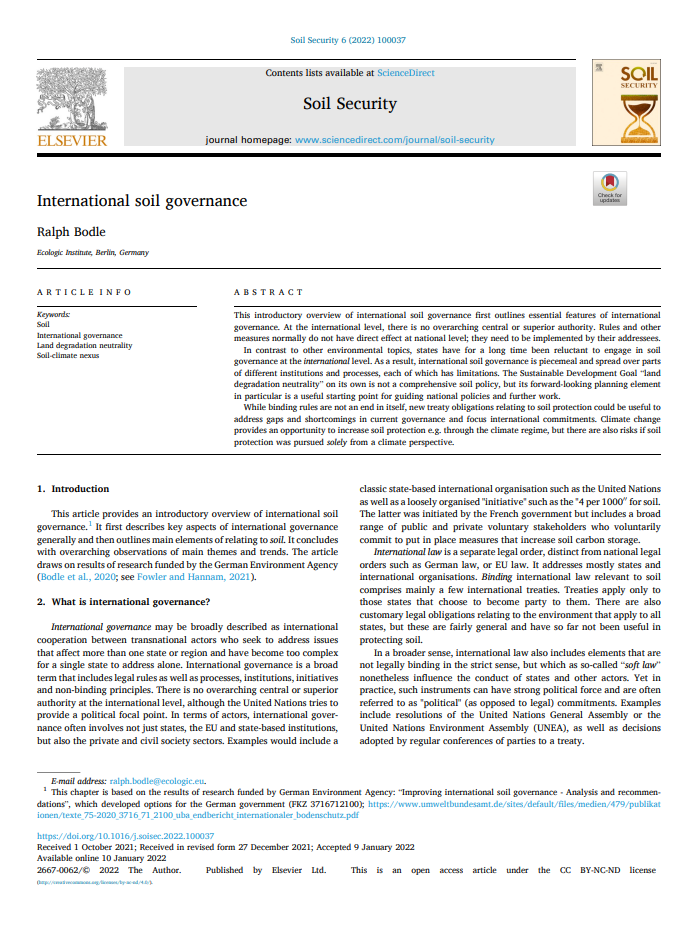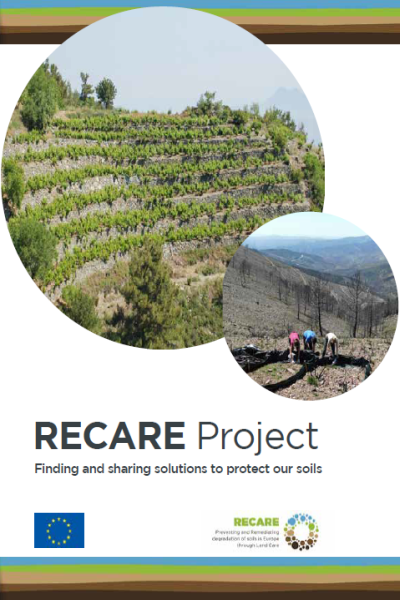
© 2022 Elsevier B.V.
International Soil Governance
- Publication
- Citation
Bodle, Ralph, 2022: International soil governance. Soil Security 6, 100037, https://doi.org/10.1016/j.soisec.2022.100037
This introductory overview of international soil governance first outlines essential features of international governance by Dr. Ralph Bodle. At the international level, there is no overarching central or superior authority. Rules and other measures normally do not have direct effect at national level; they need to be implemented by their addressees.
In contrast to other environmental topics, states have for a long time been reluctant to engage in soil governance at the international level. As a result, international soil governance is piecemeal and spread over parts of different institutions and processes, each of which has limitations. The Sustainable Development Goal "land degradation neutrality" on its own is not a comprehensive soil policy, but its forward-looking planning element in particular is a useful starting point for guiding national policies and further work.
While binding rules are not an end in itself, new treaty obligations relating to soil protection could be useful to address gaps and shortcomings in current governance and focus international commitments. Climate change provides an opportunity to increase soil protection e.g. through the climate regime, but there are also risks if soil protection was pursued solely from a climate perspective.





